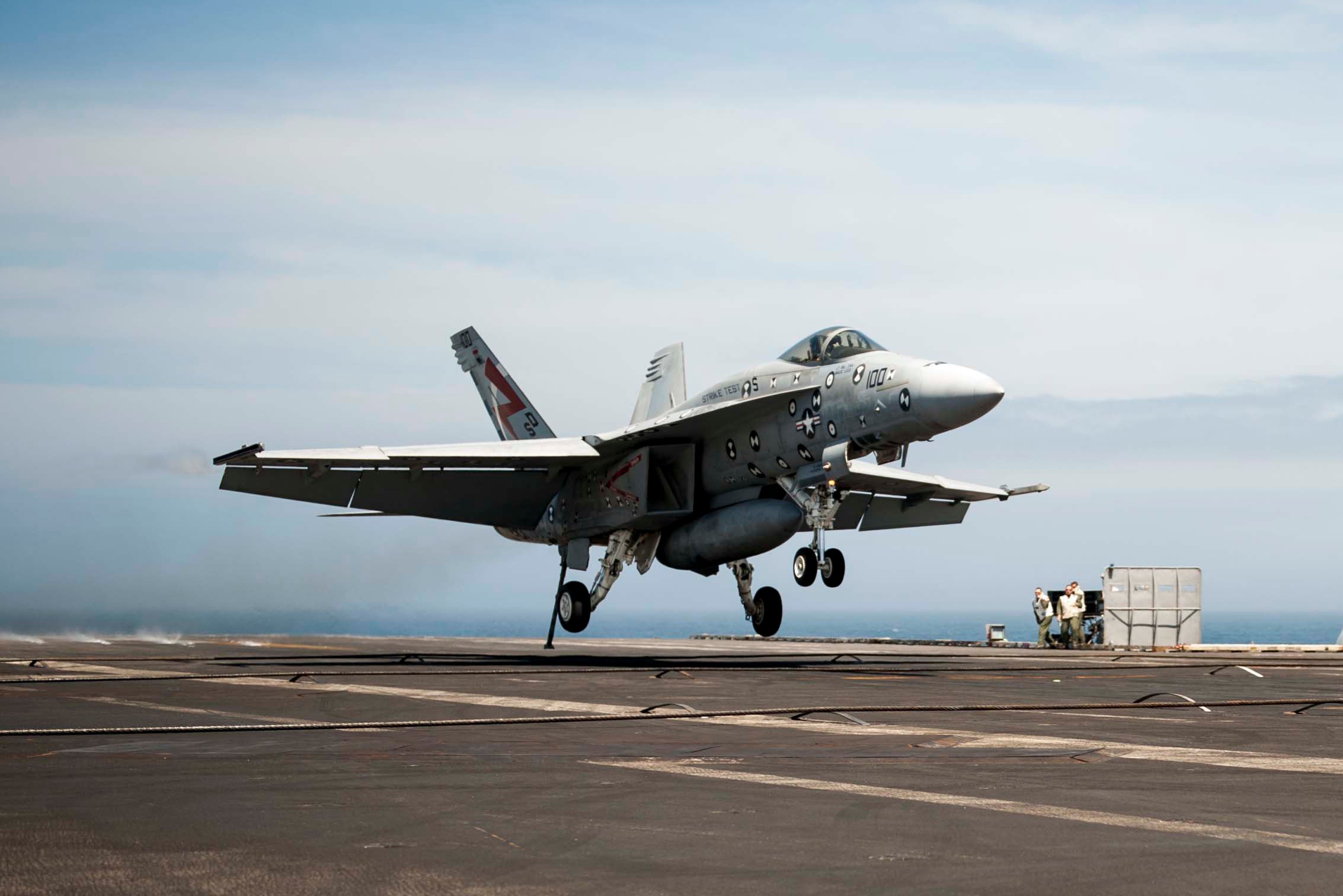Marine aviation squadrons are suffering more than ground units after 15 years of war and deep budget cuts, Commandant Gen. Robert Neller told lawmakers on Tuesday.
"We would — – as a goal – — like to have 80 percent of our units ready to go," Neller said at House Appropriations Defense Subcommittee hearing. "We’re not quite there, particularly on the aviation side."
Readiness levels for ground units are "trending up," Neller said.
"The Congress has given us $5 billion to reset our ground equipment," he said. "We’ve got about 79 percent of that complete – — and about 50 percent of that equipment is back to the force."
Aviation is "a little different story," due to the delays in the F-35 program, budget cuts and other issues, Neller said.
"Our aviation readiness is really my No. 1 concern," he said. "We don't have enough airplanes that we would call 'ready basic aircraft.' That means we're not getting enough flight hours."
The readiness issues that Marine Corps aviation units have been caused by a variety of factors, so there is no single solution, Neller told reporters after Tuesday's briefing.
"We’ve been an operating at a high rate," Neller said. "Sequestration affected the work force at some of the fleet readiness centers. There are some parts issues with new airplanes. We’re in the middle of fielding brand new model type series for every plane right now except for CH-53s. We left our airplanes overseas – — particularly our rotary wing – — probably longer than we should have, looking back it."
Neller also stressed that the Marine Corps needs to get new aircraft, such as the MV-22B Osprey and F-35B.
"We’re – — I think – — 281 of 360 on Ospreys and we’re still at the beginning of the F-35 that is going to replace three airframes," he said. "We’re in pretty good shape on the Hueys and we’re a little bit slower on the Cobras."

An AH-1W Super Cobra helicopter with Marine Medium Tiltrotor Squadron (VMM) 263 (Reinforced), 22nd Marine Expeditionary Unit (MEU), lands aboard the USS Bataan (LHD 5).
Photo Credit: Sgt. Austin Hazard, U.S. Marines
The Marine Corps declared in July that the F-35B had achieved initial operational capability. The fighters still require new software and other upgrades before being combat ready.
"We have one operational squadron that will deploy to Japan this January," Neller said at Tuesday's hearing. "We're going to form another squadron this year."
The Marine Corps has a plan to improve aviation readiness, but it is going to take time – — especially for squadrons that are swapping out older aircraft for the F-35B, Neller said.
"It takes us 18 to 24 months to take a squadron down, give them a new airplane, train them up and put them back out there," he said.
In addition to buying new aircraft, the Marine Corps needs to keep its fleet of older fixed- and rotary-wing aircraft flying, Neller told lawmakers. That means every type of Marine aircraft is being refurbished.
"Each of those aircraft are in different places," he said. "MV-22: Probably the furthest ahead. The CH-53: Just beginning the process. "
The Marine Corps also has to make sure that its aviators are getting enough flight hours so that they are not lured away by the private sector, Neller said.
"My concern is that we get enough aircraft that are flyable and that our aircrews get enough time to fly because people join the service – — if they want to be aviators – — they join to fly," he said. "We know at the same time all of our commercial air carriers are hiring. Delta – — they’ve told us – — they’re going to hire 900 pilots this year."
The Navy is also facing challenges making sure that its pilots get all of the training and flight hours they need, Chief of Naval Operation Adm. John Richardson said.
An important aspect of readiness is making sure that sailors are able to go to the schools they need so they can join their units and be ready to deploy together, Richardson said at Tuesday's hearing.
"This is particularly true with our pilots, for instance, which are dependent upon flying hours, getting in that aircraft and doing the time they need at the high end to make sure that they deploy fully ready," he said.
Richardson said that readiness is an issue that both he and Neller are most concerned.
"There’s a further dimension of readiness that involves munitions: Do we send our forces forward with the right weapons?" he said. "This is an area where we have – — frankly – — been taking risks in terms of the numbers of munitions that we need to fully execute the scenarios that we’re called to do."

"Salty Dog 100," an F/A-18F Super Hornet assigned to Air Test and Evaluation Squadron (VX) 23 at Naval Air Station Patuxent River, Md., lands on USS George H. W. Bush (CVN 77) Apr. 20, 2015.
Photo Credit: U.S. Navy.





